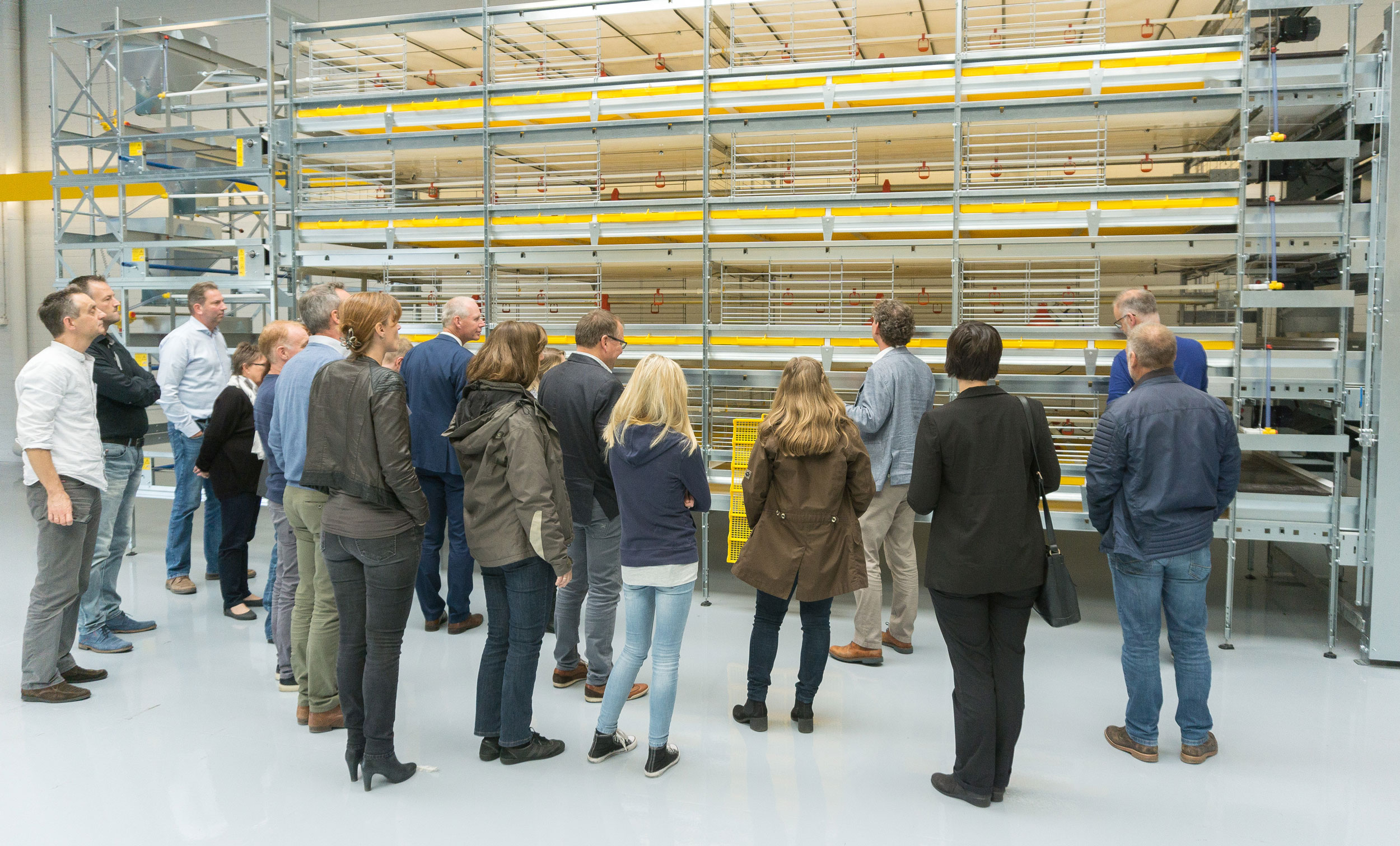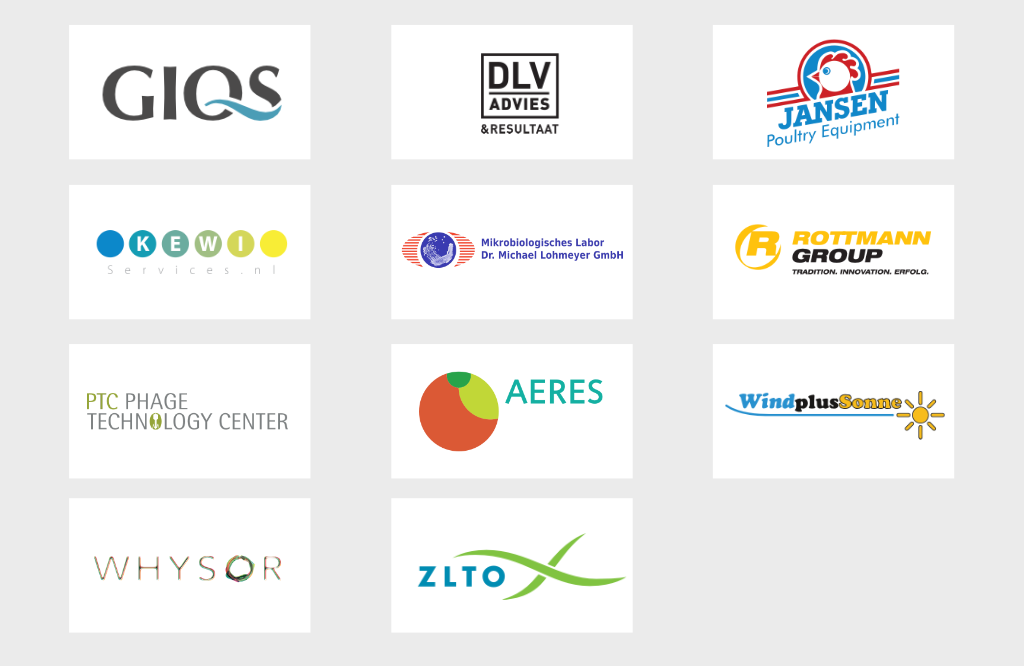German-Dutch consortium worked on reduction of endotoxins

As part of the German-Dutch INTERREG project BEL AIR, which develops solutions for clean and healthy air in poultry farms, numerous sampling and air measurements were carried out by the eleven project partners. This included the use of a modified and further developed sensor that can continuously and maintenance-free measure the fine dust concentration in the house. The eleven partners joined forces and were supported by the lead partner GIQS e.V. during the four-year project period – an important success for the German-Dutch cooperation project.
The different partners and associated partners from both countries each brought their own skills, technologies and expertise to the project. The consortium can be divided into different groups according to their respective tasks: On the one hand, there are companies that brought different technologies for reducing endotoxins into the project and made them available for testing. A second group consisted of companies that were responsible for measurements, sampling and laboratory analyses in the project. Thirdly, companies formed a group that installed various sensors in poultry houses and evaluated and processed the data obtained. Finally, the consortium is rounded off by organisations and companies that supported the partners in the project with their expertise and actively helped with the implementation of the project tasks. Finally, the German-Dutch network GIQS e.V., as lead partner, carried out the project management and supervised the individual subtasks of the partners.

Company with technologies against endotoxins
The first group consisted of different companies and techniques. For example, partner Jansen Poultry Equipment from Barneveld brought a hygienic housing system, a drying tunnel for drying manure, negative ionisation technology and a multiphase air scrubber to the project. The company PTC Phage Technology Center from Bönen provided its bacteriophage technology to the project, the Wind plus Sonne from Gronau had the effect of its Vapur technology on barn air and endotoxins tested and the company Kewi Services from Heesch had the effect of its dust separation technology tested in the project.
During the course of the project, various technologies from external partners were also tested for their effect on fine dust and endotoxins – but also ammonia – as part of the project activities. These include an endotoxin binder product, which should reduce endotoxins in the animals, a fogging spray, which should agglomerate fine dust into coarse dust in the barn, and plasma technology, which can also be used for air treatment in animal houses. In addition, barn management was addressed and the effects of increased mucking out were investigated.
Sampling and analysis
The second group focused on sampling and analysis. The partner Kewi Services from Heesch was responsible for sampling in the various test houses in the German-Dutch border area. Kewi worked with seven poultry farmers in Münsterland, Gelderland, Limburg and North Brabant, where measurements were carried out. Analyses were carried out in the project both in Kewi’s laboratory, but also in Münster in the Mikrobiologischen Labor Dr. Michael Lohmeyer and in Gronau at Wind plus Sonne. With its expertise in the field of endotoxins, the Lohmeyer laboratory carried out the endotoxin analyses and at the same time worked on the validation and establishment of a gentler, more sustainable and clearer analysis method. At Wind plus Sonne, toxicologists conducted analyses in the laboratory on the efficacy of their Vapur technology.
Sensors and ambassador parameters
Since the measurement or detection of endotoxins is currently still very complex, parallel to the air measurement with the current methods for the detection of endotoxins, attempts were also made to monitor other factors of the stable climate (so-called amabssador parameters), which are related to endotoxins and can say something about the concentration of endotoxins. These parameters should be studied, searched for and developed in an innovative way.
The three partners Whysor from Arcen, DLV Advies from Uden and Kewi Services from Heesch worked together to develop, install and read out sensors. The data obtained from the networked sensors was combined in a dashboard developed by Whysor, which gives poultry farmers a good overview of their house climate and possible emissions.
Additional experts
Various partners with different expertise rounded off the consortium: The Rottmann Group from Ahaus, for example, contributed know-how in the field of animal feed, they were available to the project consortium with their expert advice and accompanied various experiments carried out. The Stichting Aeres contributed to the consortium with their Poultry Expertise Centre located in Barneveld as a test environment, but also with their poultry expertise and close relation to the sector. Also close to the sector were the experts from the agricultural association ZLTO from ‘s-Hertogenbosch, who contributed their expertise to the project and also ensured the dissemination of the project results. They were also supported by DLV Advies, who also contributed and evaluated cold plasma technology to the project. The lead partner GIQS e.V. from Kleve rounded off the consortium and was responsible for project management and administrative processing as well as communication.
In addition to the consortium, various external research institutions were also involved in BEL AIR. For example, there were contacts with the Universities of Eindhoven (TU/e) and Wageningen (WUR) as well as the universities of Aeres Dronten and Fontys Venlo (Green Tech Lab). But there were also exchanges with the Landesamt für Natur, Umwelt und Verbraucherschutz Nordrhein-Westfalen (LANUV), the Rijksinstituut voor Volksgezondheid en Milieu and the companies Dr. Berns Laboratorium and Dr. Eckel Animal Nutrition during the four-year project period.
The BEL AIR Project
Within the BEL AIR project, various technologies for the reduction of endotoxin emissions in and outside poultry houses have been (further) developed and tested by German and Dutch partners since the end of 2018. Endotoxins (lipopolysaccharides) are formed when Gram-negative bacteria decay and are also released in the gastrointestinal tract of animals and excreted with the faeces. They attach themselves to fine dust particles and can cause respiratory diseases and impaired lung function in humans and animals. Reducing endotoxins aims to create a healthier living environment for animals, workers and residents. For more information, visit www.belair-project.eu.
BEL AIR is being implemented within the framework of the INTERREG V A programmes Deutschland-Nederland and is co-financed by the European Regional Development Fund (ERDF) and the Dutch Ministerie van Economische Zaken en Klimaat, the Ministry für Wirtschaft, Innovation, Klimaschutz und Energie des Landes Nordrhein-Westfalen and the provinces of Gelderland, Limburg and North Brabant. It is accompanied by the programme management at the Euregio Rhein-Waal.


